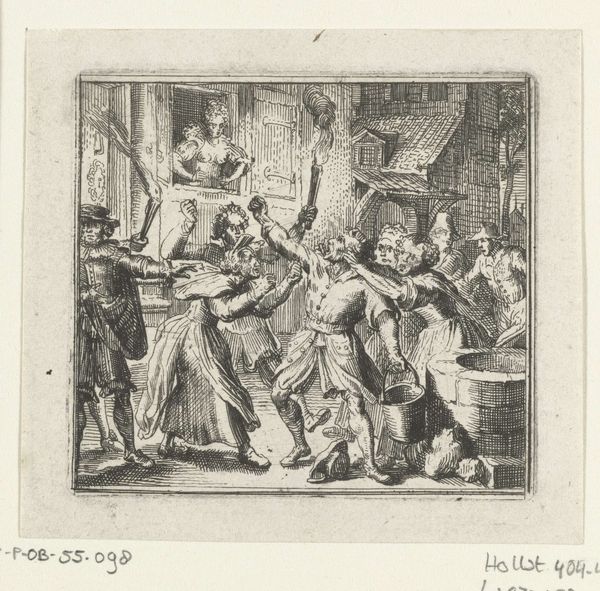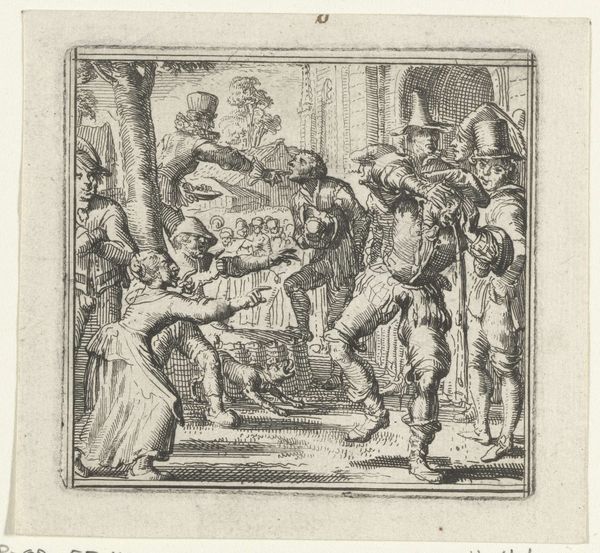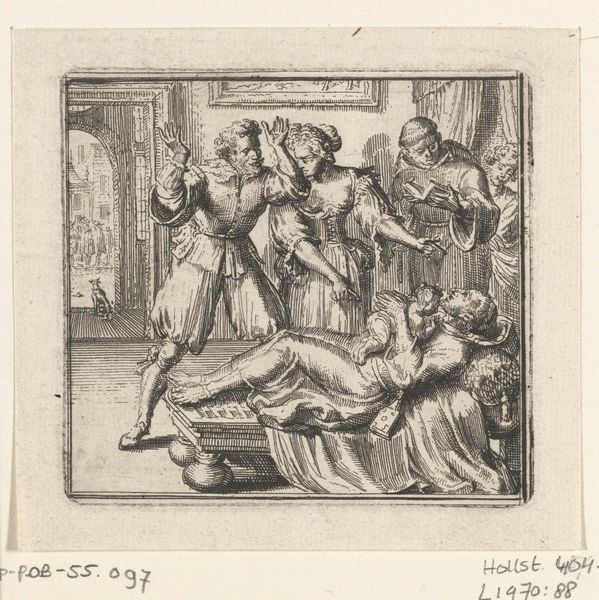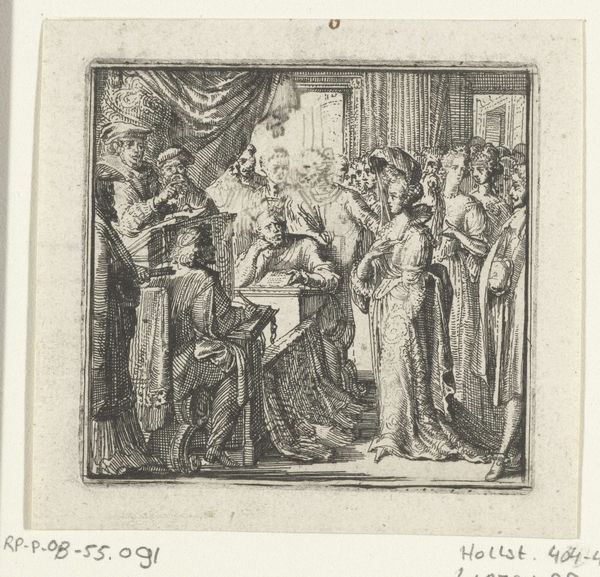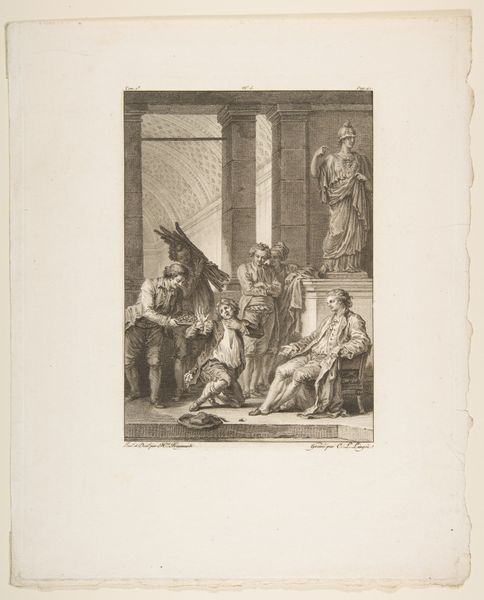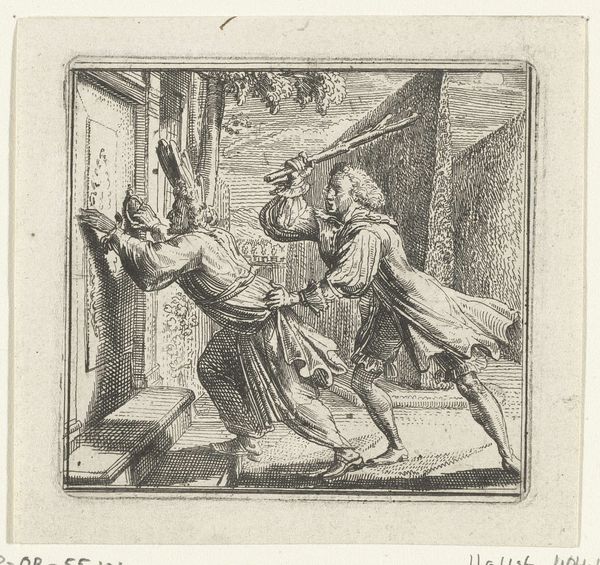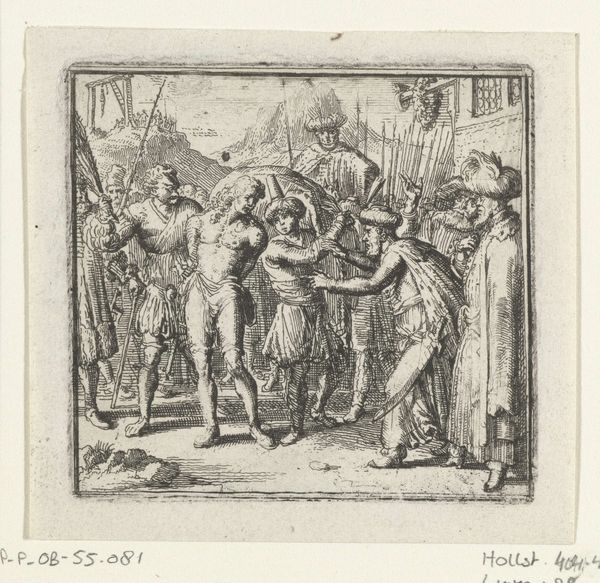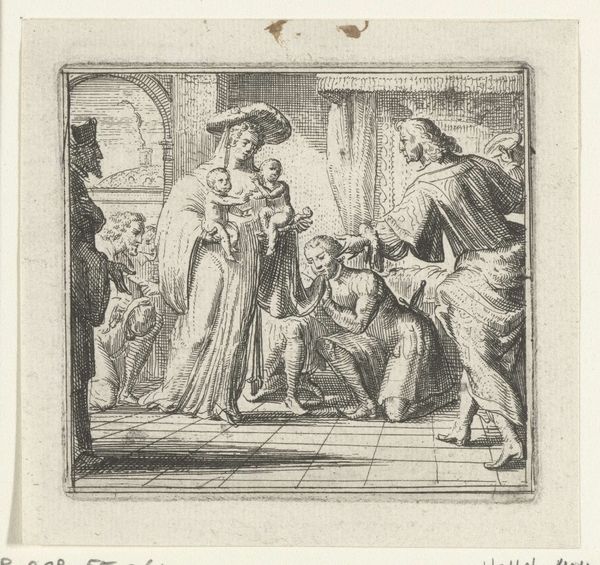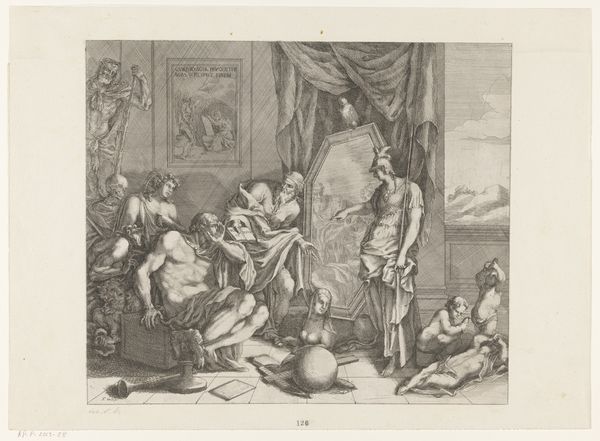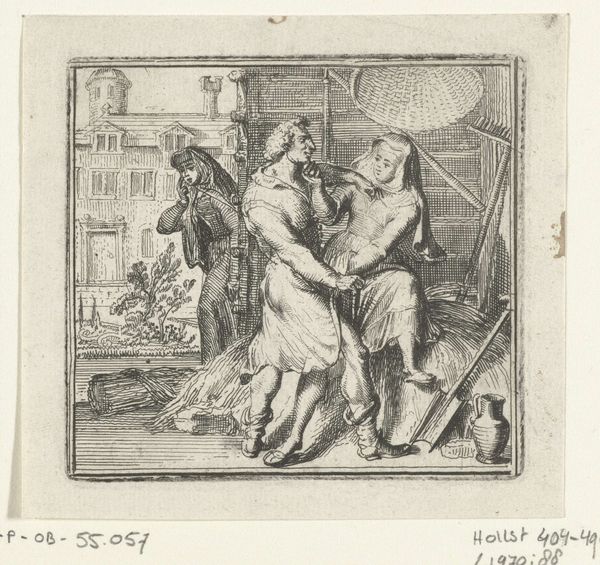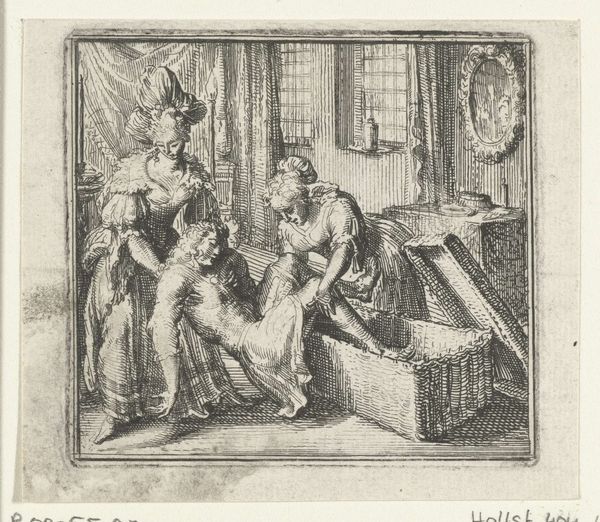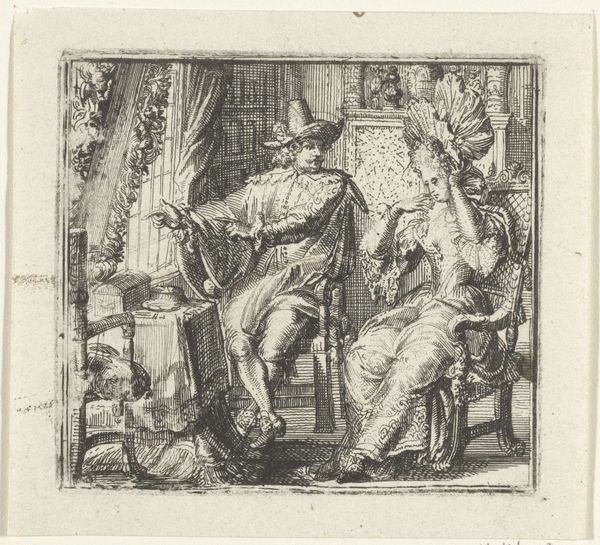
drawing, print, intaglio, engraving
#
drawing
#
narrative-art
#
baroque
# print
#
pen sketch
#
intaglio
#
old engraving style
#
line
#
genre-painting
#
engraving
Dimensions: height 72 mm, width 81 mm
Copyright: Rijks Museum: Open Domain
Curator: This is an engraving titled "Illustratie voor de Decamerone van Boccaccio," made by Romeyn de Hooghe in 1697. It’s currently held in the Rijksmuseum. Editor: It's interesting how much detail he achieves using just lines! There’s a story being told here with such limited materials. I wonder what it might be? What strikes you most about this print? Curator: It's fascinating how De Hooghe transforms a literary scene into a tangible material object. The labor involved in creating such intricate lines – the precise cuts into the metal plate – speaks to the value placed on craftsmanship at the time. The print itself then becomes a commodity, circulated and consumed. How does the act of printing influence our understanding of Boccaccio's tales? Editor: That’s a great point! By turning it into a printed image, is he democratizing it, making it available to a wider audience than the original text might have reached? I mean, who could afford a handwritten, illuminated manuscript of the Decameron back then? Curator: Precisely! The choice of intaglio also directs our focus to the physicality of production. Consider the hierarchy: Boccaccio’s stories, De Hooghe's design, and the physical act of engraving that brings the image to life. Are we prioritizing the intellectual labor of invention or the manual labor required to produce this artwork, and what values does each entail? Editor: Thinking about it as a physical object that was made and then distributed adds a whole other layer to my appreciation. Curator: Indeed. It shifts the focus from purely aesthetic enjoyment to considering the complex processes of artistic production and consumption.
Comments
No comments
Be the first to comment and join the conversation on the ultimate creative platform.
